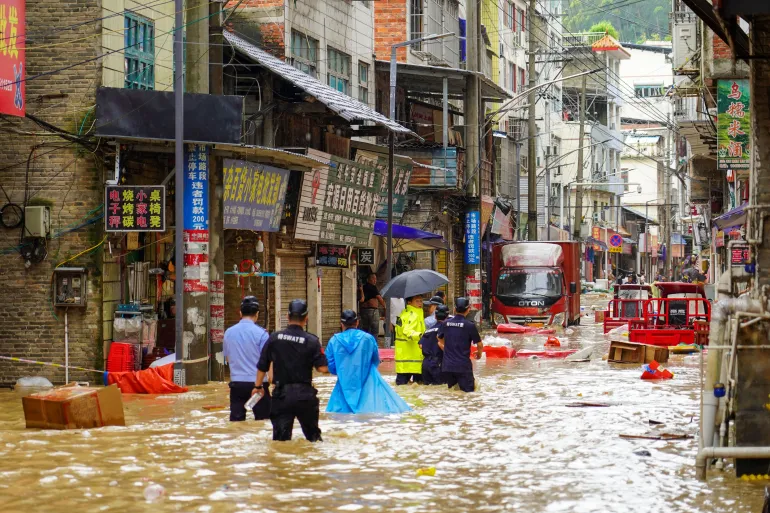China is facing a severe weather emergency as relentless heavy rains batter its northern and western regions, prompting red alerts for flooding, landslides, and infrastructure collapse. The extreme monsoon activity has already claimed lives and triggered mass evacuations, raising fresh concerns over the country’s preparedness for climate-induced disasters.
Authorities have raised the highest level of warning in provinces including Sichuan, Gansu, Henan, and Liaoning. These areas are experiencing record-breaking downpours, with rivers breaching their banks, submerging roads, and overwhelming drainage systems. In many cities and rural towns, emergency response units have been deployed to assist with evacuations and search and rescue operations.
Fatalities have already been reported due to flash floods and landslides, while thousands of residents have been forced from their homes. In several towns, streets have turned into torrents, cars have been swept away, and farmland has been inundated. Construction sites in hilly regions have also suffered from mudslides, causing structural collapses and casualties.
Meteorologists have warned that the rainfall, fueled by intensified monsoon patterns, is expected to continue for several more days. Local governments are under pressure to implement rapid response measures, including the evacuation of vulnerable populations, reinforcement of flood barriers, and distribution of emergency supplies.
Transport networks have also been heavily impacted. Flights have been delayed or canceled, train routes suspended, and roads closed due to submerged bridges or landslides. In some mountainous regions, residents have been cut off entirely, prompting airlift operations to deliver food, water, and medical aid.

The ongoing weather crisis underscores the growing vulnerability of densely populated and industrialized areas to climate change. China’s traditional flood defenses, such as levees and reservoirs, are struggling to manage the scale and frequency of these modern weather events. Urban drainage systems, particularly in smaller towns, have proven insufficient in coping with sudden surges of rainfall.
The situation is further complicated by the threat of disease and displacement. Emergency shelters have been set up in schools and public buildings, but overcrowding is already becoming a concern. Authorities are working to maintain hygiene and order in temporary housing facilities, especially in flood-prone provinces.
The country’s leadership has ordered a coordinated national response, mobilizing military units and disaster relief agencies. Dams and reservoirs are under constant monitoring, with controlled releases being carried out to manage water levels and reduce downstream flooding. Engineers and hydrologists are on high alert, particularly in regions where geological instability could trigger further landslides.
Environmental analysts point to long-term factors exacerbating these events, including rapid urbanization, deforestation, and the changing behavior of weather systems linked to global warming. Many regions now face the dual burden of economic disruption and humanitarian risk.
As the red alerts remain in place, millions are bracing for more rain. Citizens have been urged to remain vigilant, avoid unnecessary travel, and follow official evacuation orders. The evolving situation remains fluid, with disaster management officials emphasizing the importance of preparedness and swift action.
#ChinaFloods #RedAlert #ExtremeWeather #FloodDisaster #ClimateCrisis #Monsoon2025 #EmergencyEvacuation #Landslides #UrbanFlooding #DisasterResponse

















